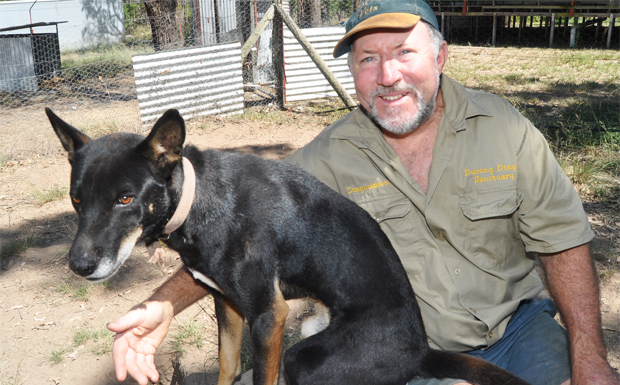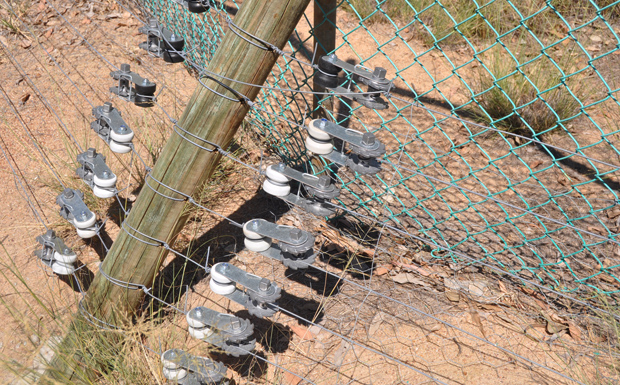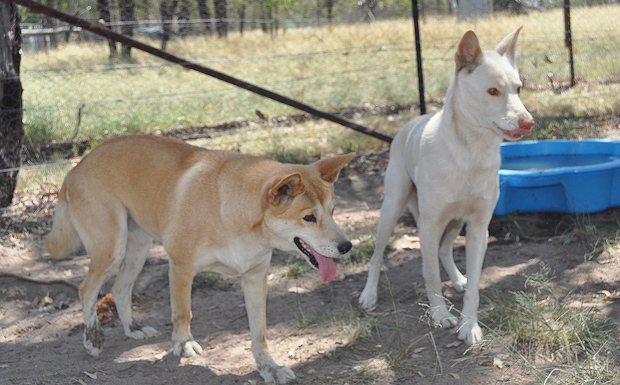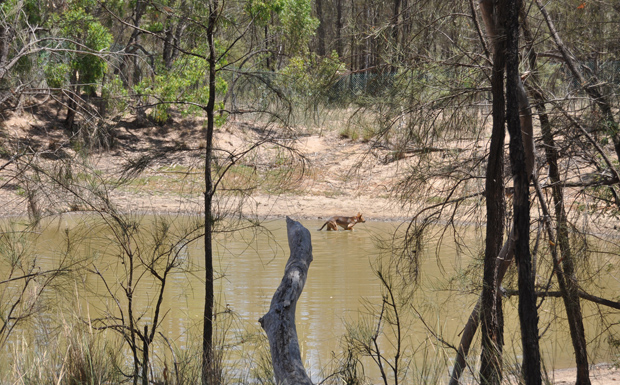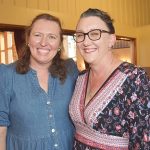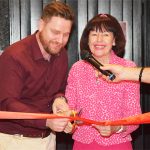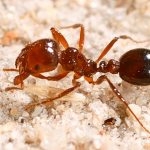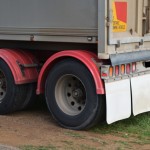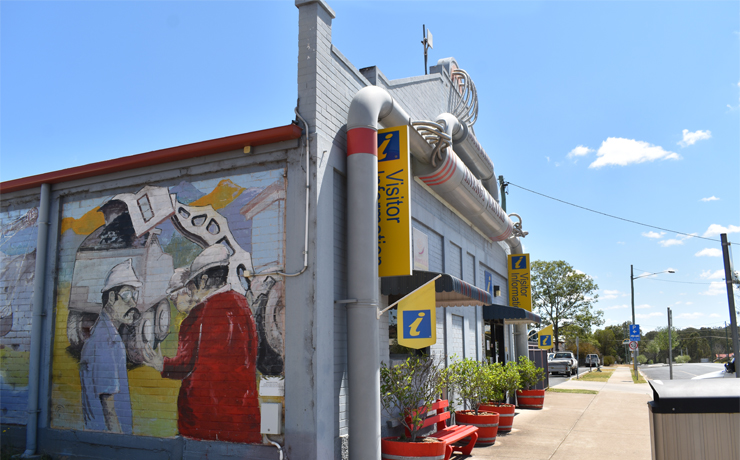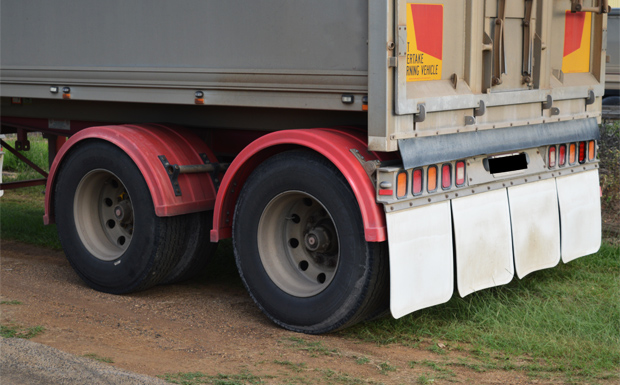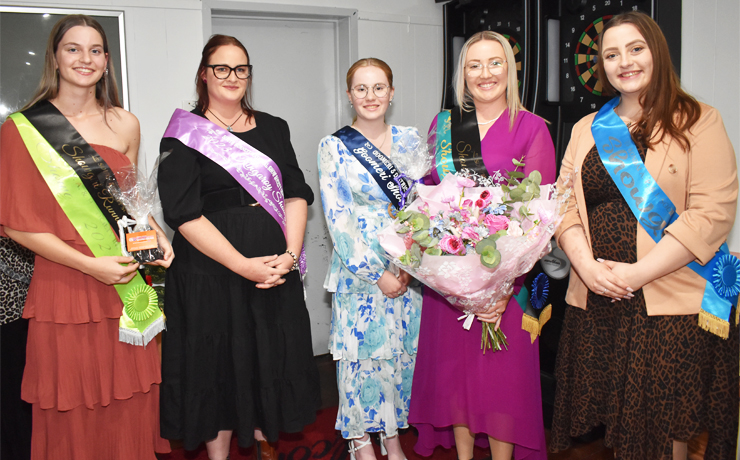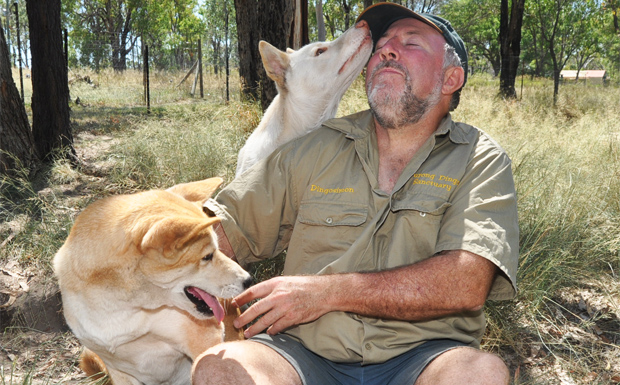
February 13, 2014
Death threats and a poisoning attack haven’t deterred Durong resident Simon Stretton from his love of Australia’s native dog, the dingo, and from his enthusiasm to build better public understanding about the animal.
“Dingo Simon”, as he likes to be called, set up the Durong Dingo Sanctuary about four years ago after being involved in dingo breeding programs in Victoria for 17 years.
You would think that a sanctuary focused on preserving an Australia native animal wouldn’t be controversial, but that wasn’t the case when Simon launched his idea in 2009.
South Burnett councillor Damien Tessmann was outraged at the time, comparing the decision to breed dingoes in a cattle grazing area to “building a brothel next to a school”.
Other local voices weren’t so measured. Simon received three death threats and someone baited and killed one of his animals, a dingo named Wongee.
Since then Simon – who ironically was also running Droughtmaster cattle – has increased security on the property, including the installation of surveillance cameras.
The Durong Dingo Sanctuary is officially a zoo. It is registered for film and TV work, educational and display purposes and breeding.
Simon has 17 dingos, all registered with Biosecurity Queensland. They are microchipped and have been DNA-tested for purity.
The animals are kept in special pens, behind 2.4m walls and enclosed by electric fences. Each pen has double entry doors and are kept padlocked.
Many of the animals are rare.
A very special dingo at the Sanctuary is Kirra, the only surviving dog from the original Hook Point pack on Fraser Island, who has been the focus of a breeding program by Simon to help preserve her genetics.
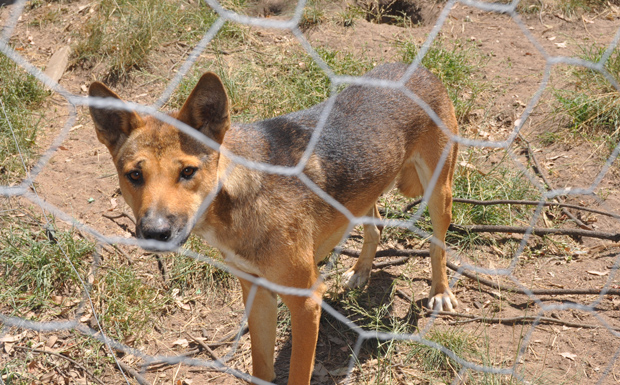
Dingos are not a dog. Their official scientific name is Canis lupus dingo.
In comparison, domestic dogs are considered a different species, Canis lupus familiaris.
Modern genetic testing points to them being descended from East Asian dogs.
The origin of dingos in Australia is a bit of mystery. While some sources suggest they have been here for about 4000 years, Simon believes they may date back as far as 18,000 years.
There are four different types: Alpine, Desert, Tropical and Fraser Island; and while 80 per cent of pups are ginger in color (the typical dingo that we all know), black and tan make up about 18 per cent and white are less than 2 per cent. Pups of different colours can occur in the same litter.
The “typical” dingo has “opera house”-shaped ears, a white tip on his tail and white socks, but the absence of any of these features does not necessarily mean they are not pure-bred. This can really only be determined by genetic testing.
Simon said dingoes only breed once a year and usually have four to six pups while feral domestic dogs can have more than 10 pups twice a year.
Their natural prey in the wild are wallabies and kangaroos, and as a top-level predator they play an important role in controlling the numbers of these species.
And despite the much-publicised case of Azaria Chamberlain, humans are not their natural food.
“They are not the killers that people portray,” he said.
“They are very gentle animals, very curious.”
Simon said the animals farmers saw on their properties were nearly always wild feral dogs – the descendants of escaped working or pigging dogs. The dingoes would be there, but they would be shy and hiding in the background.
But he admits they can be a law unto themselves.
“They are like a cheeky monkey in a dog suit,” he said.
The way the animals communicate intrigues Simon. They use tail gestures and vocalisations but they can behave almost as if they have mental telepathy.
Three years ago Simon bred the first legal dingo pups in captivity in Queensland however Biosecurity Queensland won’t allow him to breed any more at the moment.
This frustrates Simon, particularly when he sees other Queensland wildlife sanctuaries importing dingo pups from interstate when they could be sourcing Queensland animals from his program.
However Simon now hopes to build on the educational aspects of the sanctuary. He has approached local schools and last year 13 students from Cherbourg State School visited.
He has also been working with Save Fraser Island Dingoes Inc (SFID) and has a dream that one day an animal care clinic could be established on Fraser Island which would be funded by tourists paying to have a “dingo encounter” with his animals in a controlled enclosure.
He would also like to introduce the genetics from his dingo-breeding program into the Fraser Island dingo population, which he believes is at risk of extinction because of in-breeding after culling.
NB. Keeping a dingo in Queensland without a permit is illegal and can attract a $30,000 fine.
- The Durong Dingo Sanctuary is open five days a week, but by appointment only. For more information, contact Dingo Simon by email
[UPDATED with correction]
